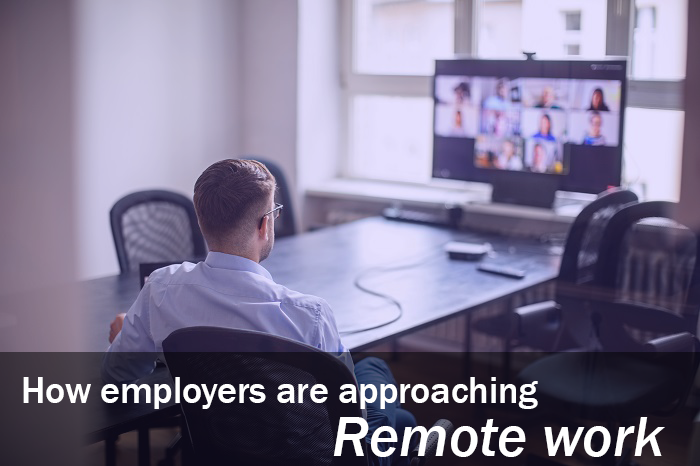As the pandemic forced companies into a virtual environment, many began to take a closer look at their post-pandemic workplace. Twitter and Square, who both announced that nearly all their employees will have the option to work from home permanently, have now been joined by Facebook, which just revealed plans to shift as much as half of its more than 45,000 employees to remote work over the next decade. The sum of these moves means many employees could end up working remotely for the duration of their tenure with these companies—whether they signed up for it or not.
Consider your employee expectations. To say that employees don’t need to be in an office overlooks a few things that are not universally true.

First, remember that many employees joined your company for a variety of reasons that likely included location, cultural fit, workspaces, professional networking and social opportunities, and amenities. Taking away space that your teams leverage for camaraderie or other needs is essentially changing the terms and conditions your people chose when they joined your company.
Second, remember that employees are making any number of herculean sacrifices to keep their jobs right now. Equating that to eliminating offices, collecting real estate savings and calling it a good long-term move is a mistake. Signing up to work for a company that was partly or fully virtual from the outset is far different from going to work for a company and having your office key yanked due to a pandemic. Companies that eliminate office space are essentially shifting the cost of space to their employees. Despite offsetting factors like convenience and eliminating commuting costs, many employees will feel this as a loss of benefits or compensation if not re-balanced in other ways.
Consider your employees’ home office situations. From an employee experience perspective, don’t assume that everyone has a dedicated workspace or a home life conducive to productivity and engagement virtually. An employee working for a Wall Street firm who has rented a micro-apartment a few blocks from the office, who uses an IKEA mini table next to their bed as a desk, is now dedicating his or her 10 square feet of personal space to a company that previously gave them a workspace larger than their apartment, with free coffee or snacks. Or imagine an employee who lives in a multigenerational household with infants or aging parents or cohabitates with several roommates, and you have challenges with ineffective workspaces leading to an unworkable situation.

Consider the neurodiversity and well-being of your employees. Offices offer choice when it comes to the level of energy, quiet spaces, personal interactions or separation of work from home life. Remote work offers just one environment, which may be detrimental to the health of some. For others, the isolation of working from home, especially long-term, can exacerbate or deepen safety, mental health and productivity issues. You may also have members in your workforce who are among the millions challenged by cognitive or executive functioning disorders who depend on the structure that comes with working onsite to perform at their best.
Consider your culture. The most successful companies understand that their organizational culture and employment experience is a competitive advantage. It would be foolhardy to assume that transitioning post-pandemic into a 100% virtual environment would not disrupt that culture. Much of the best-in-class organizational culture we enjoy or aspire to is deeply rooted in having in-person exchanges with co-workers and engaging in workplace-based communities of interest. This is especially true for younger generations in the workforce who highly value finding community at work. This may also be true for other generations who have built generations-long relationships through connections found in the workplace. To lose the in-person connections will undoubtedly impact organizational culture, especially if not managed with intentional optimization efforts.
Consider equity. There is also an equity component that must be considered if you’re contemplating a transition to a predominantly remote workforce. If you can get to the front door of the workplace, some of the inequalities and challenges that an individual may face have potential to be offset, enabling each person to be their best, regardless of their home size or condition, neighborhood, economic status, or home and personal life dynamics. Remote work assumes an economic capability that facilitates productive work from home such as additional private space, ergonomic work tools, and reliable high-speed connectivity. This assumption creates an implicit bias in favor of employees who have all these items in easy economic reach. You may be impeding your brightest talent without realizing you are doing so.




